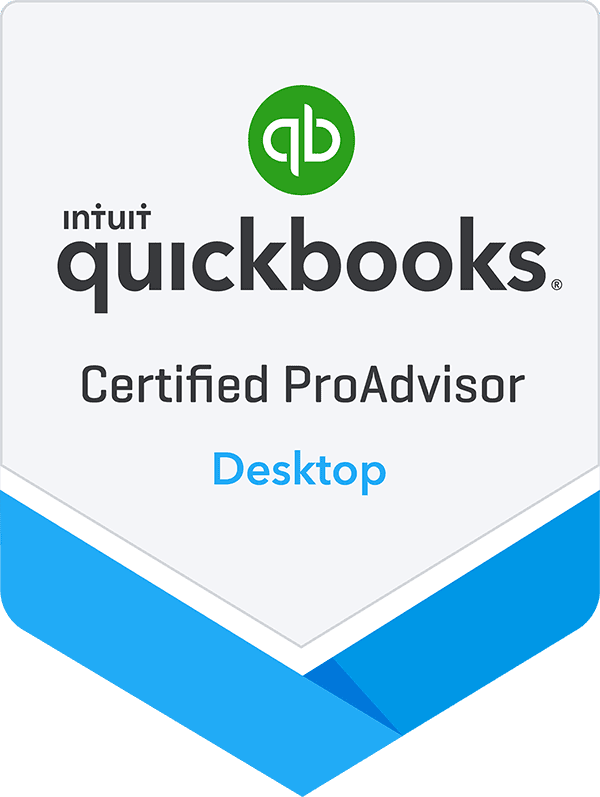
By: Jeff Heybruck
Forecasting cash flow is one of the most difficult but impactful planning exercises a business owner can undertake. There are a few prerequisites for creating a cash flow forecast. Before starting, it is helpful for the business to have accurate historical cash flow data, profit and loss statements, and a budget or at least some realistic assumptions to pencil in.
This work will be well worth the effort. An accurate cash flow forecast enables businesses to adjust decisions (eg. when to begin the process of applying for a loan) and operations (eg. anticipate the need for staffing changes) far in advance of expected cash flow shortfalls or potential surpluses. This proactive adjustment greatly increases the business’s chances of hitting planned growth milestones and ensuring sufficient cash reserves.
In this edition of Lucrum’s Small Business Tips, our QuickBooks ProAdvisors walk through the steps and reports needed to get to cash flow forecasting, starting with understanding cash flow.
1. Understanding Cash Flow Statements in QuickBooks
Before a forward-looking view of anticipated inflows and outflows can be achieved, it’s important to look back. The Statement of Cash Flow summarizes the business’s actual cash flow activity over a specific period (eg. a month or a quarter). The format is pretty standard, and it’s considered one of the “big 3” accounting reports along with the Income Statement and Balance Sheet.
The Statement of Cash Flow supposedly gives insight into how much money the business made, where that money came from, and where it went. The problem is, it’s hard for many business owners to understand because it starts with Net Income and reconciles non-cash transactions and timing differences back to the ending cash number. Even Lucrum’s CFO’s struggle to understand it based on the format. But it lives on since it’s an official report as required by Generally Accepted Accounting Principles (GAAP). As you’ll read later, we’ve found that most business owners (and normal humans for that matter) think of cash along the lines of starting balance, money earned, money spent, and ending balance. We like that format a lot better.
A Cash Flow Statement includes three key categories:
- Operating Activities: This section tracks cash directly related to core business operations. Includes inflows like customer payments and outflows like inventory purchases, salaries or rent.
- Investing Activities: This category tracks transactions related to buying or selling long-term assets like equipment, property or investments.
- Financing Activities: This section summarizes cash movement linked to borrowing money, repaying loans, or issuing shares.
Accessing Your Cash Flow Statement in QuickBooks:
- Go to Reports.
- In the Search field, type Statement of Cash Flows.
- Select the Statement of Cash Flows item to open the report.
- Customize the report date range and other settings as needed.
To view a sample cash flow statement, read our article Cash Flow for Small Business.
Tip: While QuickBooks doesn’t require any “setup” per say of the Cash Flow Statement, its accuracy will depend on a well-organized Chart of Accounts and correctly categorized transactions. Read our QuickBooks Setup Dos and Don’ts for more on configuring a well-thought-out Chart of Accounts.
2. Understanding QuickBooks Profit & Loss Statements
The Profit & Loss (P&L) Statement differs from the Statement of Cash Flow in that it tracks profitability, while the Statement of Cash Flow (or any other format) tracks cash movement. It is used to track overall financial performance, while the cash flow statement stops at liquidity management and planning to ensure enough cash for future needs.
QuickBooks Profit & Loss Statements include income, COGS, expenses, taxes and net income (loss). Net Income is the bottom line of the P&L, calculated by subtracting all expenses (including taxes) from total income. It indicates the overall profit or loss for the period.
3. Budgets In QuickBooks
A QuickBooks budget sets specific targets and goals for future income and expenses. In essence, it is a roadmap for the desired cash flow performance. Folding budgets into Cash Flow Projections allows for scenario modeling and planning (eg. unexpected expenses, increased sales). Marrying a budget with a cash flow report turns a historical document (showing what already happened) to a forward thinking one (a forecast).
Read our Budgeting in QuickBooks 101 small business tips for detailed information on how to create a budget in QuickBooks.
4. Assumptions
Historical data can help us to make some assumptions about key metrics for cash flow forecasting. For example:
- Average Days to Pay is used to estimate how long the business expects it to take their customers to pay invoices. This impacts the cash inflow from sales.
- Payment Term, the payment terms negotiated with suppliers and customers. This also influences the timing of cash outflows.
- For non-services businesses, Inventory Turnover can be another assumption needed. The number of times inventory is sold and replaced within a specific period can influence tied-up cash.
- For businesses who get deposits, understanding the timing and seasonality of deposits can also make a big impact on cash flow but not affect the Income Statement.
Assumptions will collectively shape the Cash Flow Forecast.
5. Cash Flow Forecast
Depending on the version of QuickBooks used, there may be built-in tools available (eg. QuickBooks Online Cash Flow Planner can predict cash flow over the next 30 to 90 days) to forecast cash flow.
But even if you don’t have a subscription to QuickBooks that includes such a tool, projections can still be calculated in Excel. This is typically structured as a 13-week rolling cash flow forecast or a twelve-month report showing the current year Actual and Forecasted results. In fact, our accountants recommend exporting data to Excel for the cash flow forecast for its flexibility to fit the specific cash flow method.
For example, some companies might want to track all cash flow in one bucket, while others may want to break this out by customer or supplier. The business model and type could also determine whether a shorter or longer term cash flow forecast (other than the 13-week rolling) might be needed.
Instead of using the GAAP approved Statement of Cash Flow, Lucrum has created our own cash flow reporting format that we call a Sources and Uses report. We like it more because it follows with how most of our business owner clients think of their cash: “what did I start with, what did I do this month, and where did I end up?” Our report breaks down all activity into three buckets:
- Operating Activities: This section tracks cash directly related to core business operations. Includes inflows like customer payments and outflows like inventory purchases, salaries or rent.
- Financing Activities: This section summarizes cash movement linked to borrowing money (loan draws, line of credit, credit card activity).
- Owner Activities: This section looks at cash transactions related to owner and shareholder activity. It includes investments by the owner or withdrawals from the business. It also includes owner salaries. It provides insight into how owner-related transactions may be affecting the company’s cash flow.
Combining all the above financial data allows businesses to arrive at Cash Flow Forecasting. Here’s how each contributes:
Cash Flow Report:
Whether the official accounting industry Statement of Cash Flow, Lucrum’s own Sources & Uses report, or one of your own creation, use historical data from your cash flow statement as a starting point for estimating future receipts and payments.
P&L Statement:
While not directly showing cash flow, the P&L provides valuable insights for your forecast. Look at revenue lines to estimate future cash inflows. However, remember that some expenses like depreciation don’t affect cash flow, so adjustments are needed.
Budget:
Your budget acts as a roadmap for planned expenses and income. Forecast cash inflows based on budgeted sales and collections, and cash outflows based on planned operational costs, investments, and debt repayments.
Assumptions:
These are crucial data points that will be directly used in your forecast. Use realistic assumptions about factors like future sales growth, collection periods, payment terms, and planned investments. Consider various scenarios with different assumptions to test the sensitivity of your forecast.
In Conclusion
Remember, your cash flow forecast should be flexible and adaptable. Regularly review it as circumstances change. Data consistency is also key. Ensure data from all sources (budgets, statements, historical records) is aligned and comparable.
Need help getting to cash flow forecasting? Our QuickBooks experts can help. Learn more and reach out to our QuickBooks ProAdvisors here.

QuickBooks Desktop is Going Away
Should I migrate to QuickBooks Online or Upgrade to Enterpise? Get a customized plan from our experts.




